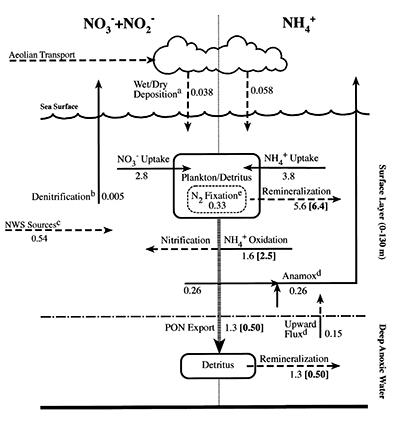The McCarthy group has a long-standing interest in the factors that regulate primary production. Their work has extended from coastal and estuarine areas such as the Chesapeake Bay and Massachusetts Bay to enclosed and semi-enclosed seas such as the Caribbean and Black Seas to open ocean areas such as the North Atlantic, Equatorial Pacific, Southern Ocean, and Arabian Sea. A common theme is that of examining the effects of strong seasonal or interannual climate forcing on biological and biogeochemical systems.
 The elemental currency that weaves through many of these studies is that of nitrogen, which is a common limiting nutrient in marine waters. By employing isotopic techniques in controlled laboratory studies and field investigations McCarthy’s students and postdocs have pursued a wide range of questions relating to sources of nitrogen and biological and physical processes that supply and retain nitrogenous nutrients in natural systems.
The elemental currency that weaves through many of these studies is that of nitrogen, which is a common limiting nutrient in marine waters. By employing isotopic techniques in controlled laboratory studies and field investigations McCarthy’s students and postdocs have pursued a wide range of questions relating to sources of nitrogen and biological and physical processes that supply and retain nitrogenous nutrients in natural systems.
Coupled atmosphere – ocean physical processes such as wind mixing and upwelling can have strong seasonal and episodic characteristics. Their effects on the redistribution of plankton and the sources of nutrients affect the quality and quantity of production in marine waters, including the configuration of food webs and the efficacy of biological processes in exporting organic matter to the deep-sea.
As climate changes in response to a warming world, some species will shift their distributions in direct response to changes in temperature. Warmer surface oceans, made less saline by reduced sea ice formation or by increased run off with the melting of land ice, will give rise to different upper ocean density structure and hence nutrient availability. The role of storms on biological processes continues to be an important line of research made more compelling by the prospect of altered intensities and paths of storms in a warmer world.